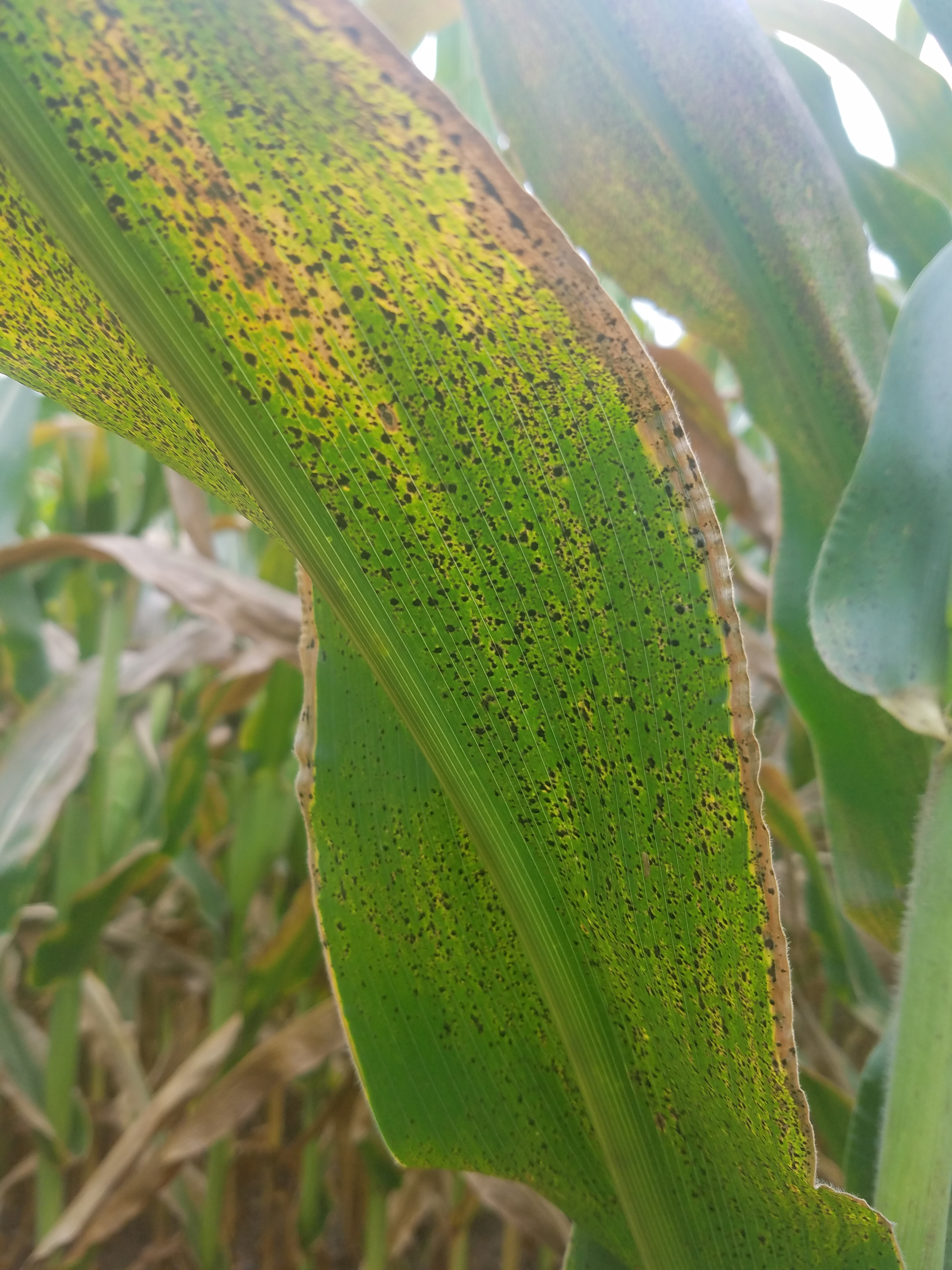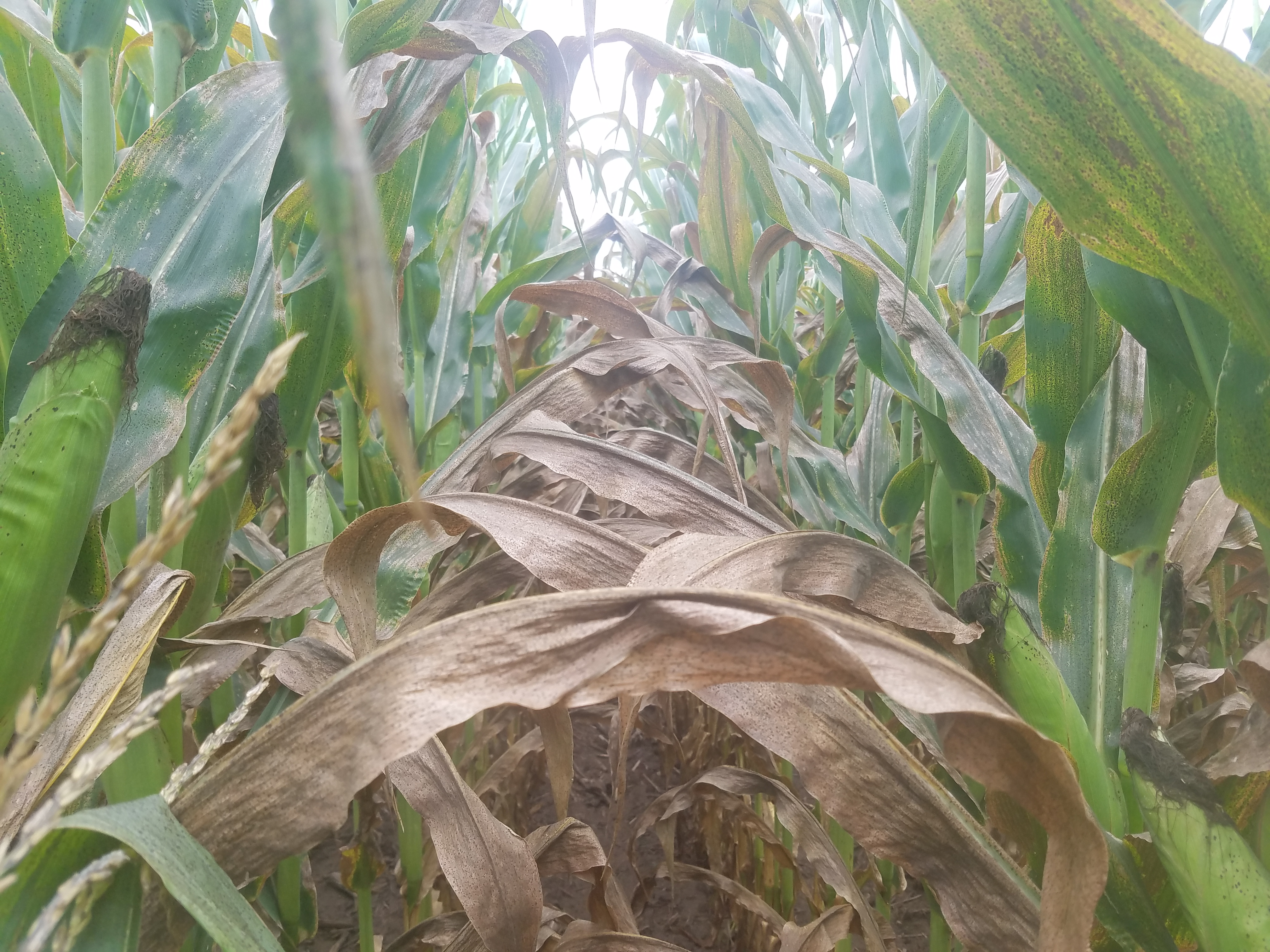Phyllachora Maydis
Phyllachora maydis (Maubl.) is an obligate parasite of Corn (Zea mays) that was reported in Michigan for the first time in 2016.

Phyllachora maydis (Maublanc)
Ecology and Morphology: Phyllachora maydis (Maubl.) is an obligate parasite of Corn (Zea mays) that was reported in Michigan for the first time in 2016. The Phyllachora genus contains many tarspot causing fungi, but P. maydis is the only pathogen capable of causing tarspot on corn. P. maydis is considered a new and emerging pathogen of corn in the United States with the potential to cause yield loss. This pathogen has been found on a variety of hybrids, some expressing more resistance than others. Phyllachora maydis is easily identified by the small, black ascomata (1-5mm diameter) found throughout infected leaves which cannot be rubbed from the leaf. Necrotic halos surrounding the black ascomata can regularly be seen throughout infected plants. P. maydis overwinters in plant debris and re-infections are thought to occur via windblown ascospores in mid-summer. Ascospores are ellipsoid, aseptate and hyaline.
Taxonomy:
- Kingdom: Fungi
- Division: Ascomycota
- Class: Sordariomycetes
- Order: Phyllachorales
- Family: Phyllachoraceae
- Genus: Phyllachora
- Species: P. maydis


Literature:
- Maublanc, A. 1904. Espèces nouvelles de champignons inférieurs. Bulletin de la Société Mycologique de France. 20(2):70-74
- McCoy, A. G., Romberg, M. K., Zaworski, E. R., Robertson, A. E., Phibbs, A., Hudelson, B. D., … Chilvers, M. I. (2018). First Report of Tar Spot on Corn ( Zea mays ) Caused by Phyllachora maydis in Florida, Iowa, Michigan, and Wisconsin. Plant Disease, PDIS-02-18-0271.
- Ruhl, G., et al. 2016. Plant Dis. 100:1496.



 Print
Print Email
Email



